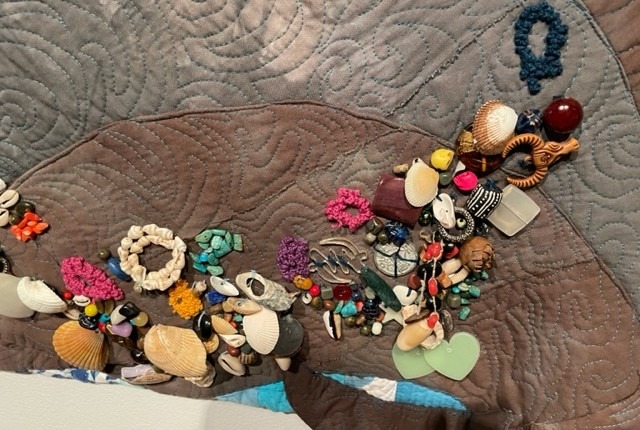Story and Photos by Emily Lee Stehle
. . .
The Story of Maitland Fiber Artist Lauren Austin
. . .
Through March 19
Free
Polk Museum of Art
Lakeland
Details here
. . .
Lauren Austin (b. 1959) is a fiber storytelling artist who has established herself over 30 years with large-scale figurative quilts that draw you into her world. She is African American and her stories are based on fact, memory, cultural history and whimsical fantasy.
The Polk Museum of Art at Florida Southern College presented this show as part of its observation of Black History Month featuring an artist from their own “backyard” so to speak. But the universal messages in her art is easily understood and can appeal to every one of us fortunate to find themselves in front of Austin’s work.
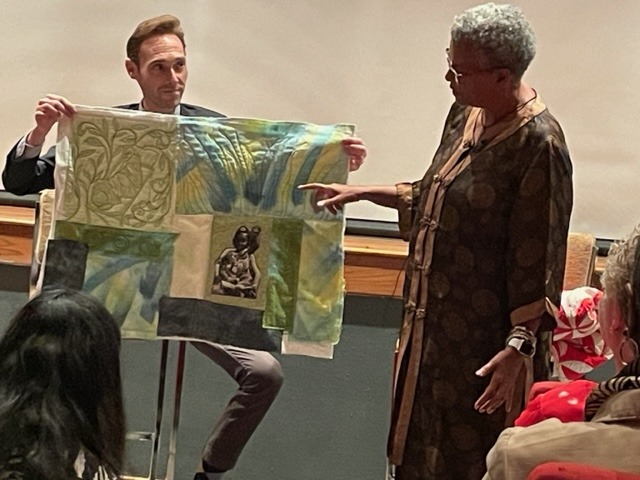
Austin says she catalogues her life through making art about her perspectives on Black history. She makes art to celebrate family events, art about the places she’s lived, the work she’s done and issues that interest her.
Many of the quilts in this exhibit incorporate passions for exploring her cultural experiences and personal history with intricate old, new and novel methods of surface design.
Exquisite machine and hand-needle stitching, beading, mixed media with photos and images of people from years ago. She uses traditional Yoruban methods to dye, paint and print with fiber-reactive dyes and indigo, and wood and linoleum block printing in her work.
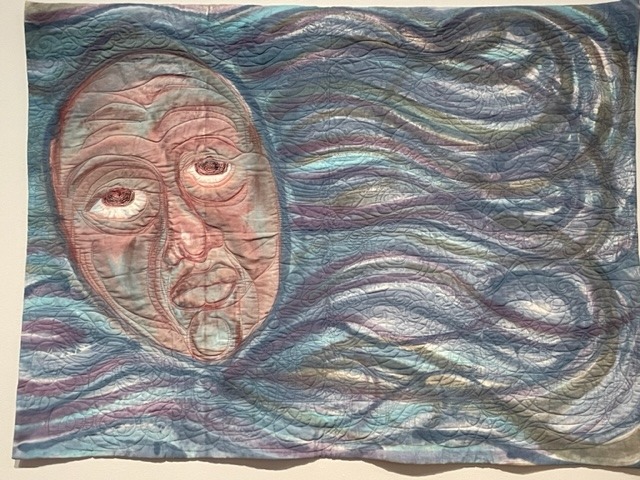
Long a tradition in African American history, quilts and their makers are starting to be noticed in the world of art.
Austin’s work is large-scale, and anyone can relate to her experiences. It’s very easy to find beauty in the stories she weaves into each detailed hanging piece of art. To marvel at the specific stitch, fabric or color in each inch of each quilt.
We feel emotions viewing her chronicle of the drama of everyday life and how Austin sees the relationships of her community of people to the natural world.
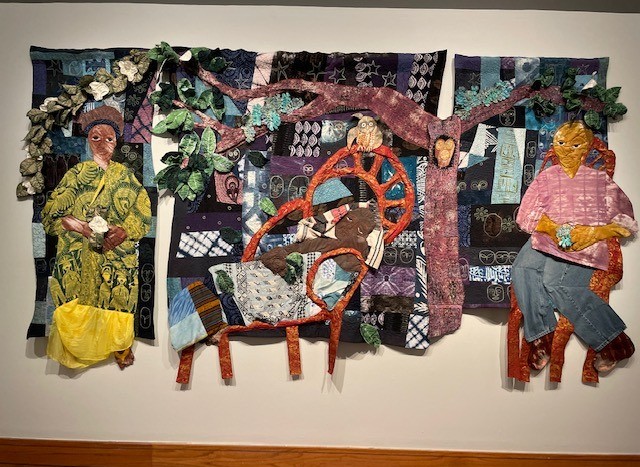
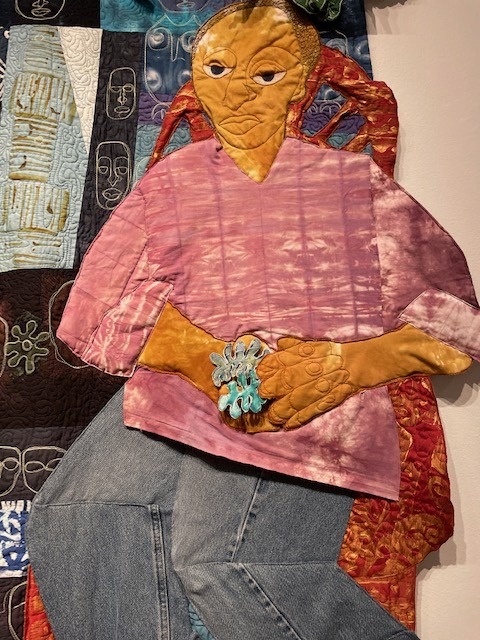


Austin pairs two works, Our Vision of His Transition and Paid for Pain, for this exhibit that tell the story of caring for her uncle in the hospital before he passed. Our Vision came first. Paid for Pain took another year to finish.
“Here I wanted to envision what he would have wanted, resting in his beloved wild spaces with creatures and plants all around,” Austin wrote. “The idea comforts me.”
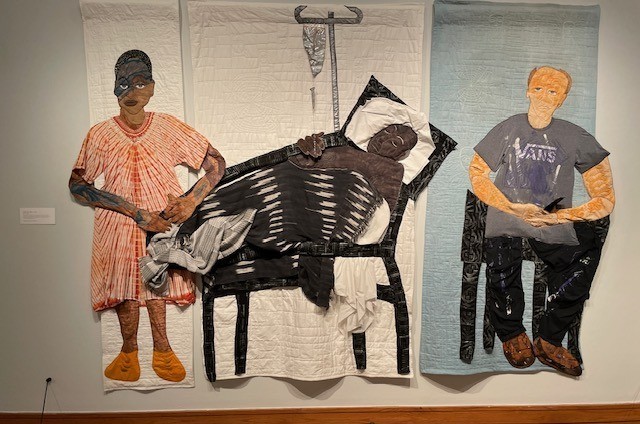
I was drawn to these four quilts (Our Vision is in three panels) because of the contrast in showing the same subject matter. One with color – a folkloric tone and the miracle of memory – the other showing a matter-of-factness in the reality of a long, unhappy wait in a stark, cold hospital room. Our Vision has a dream-like quality. Paid for Pain’s imagery is colder, more observational, more clinical.
Two sides of the same story. In both cases, we cope.
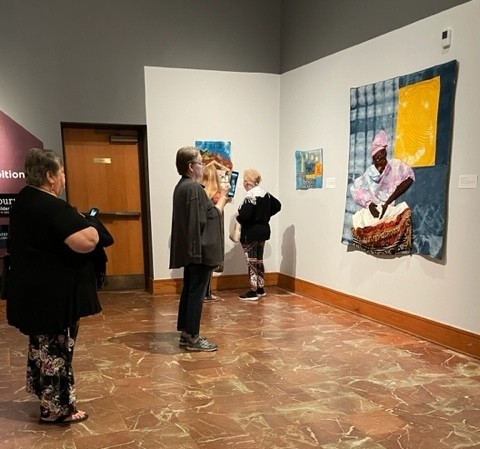
Every quilt tells a story. And in every quilt, you see Lauren Austin’s view of her life including ancestors and other living relatives, cultural influences and birds and nature in full color for the past 30 years.
It’s a life well-lived, that all can witness and relate to.
. . .
Austin’s Family and History Quilts
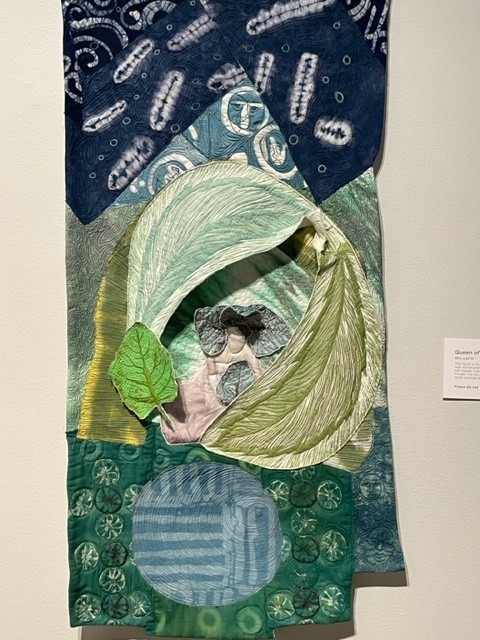
Austin’s paternal aunt, Barbara Austin Langford is the Queen in her high school prom dress surrounded by leaves.

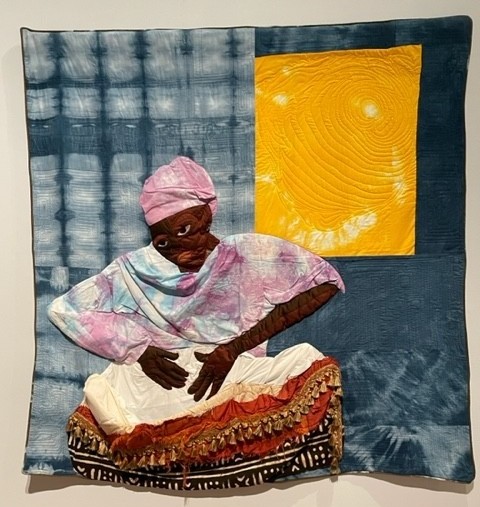
Austin lost her first baby late in the pregnancy. The quilt shows an empty bassinet and sense of melancholy, the hidden ache that families experience with loss.
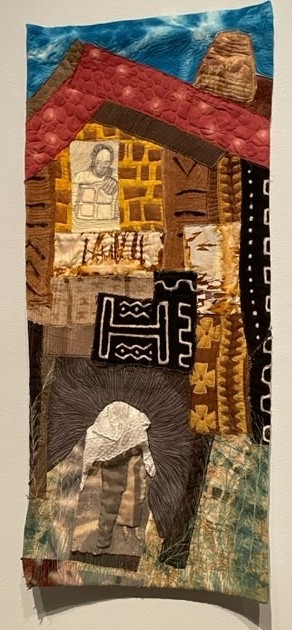
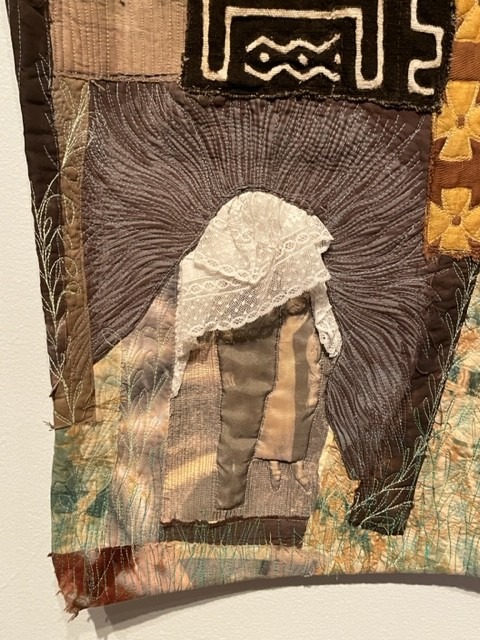

Austin’s younger son Jacob is the figure in the window reading with his great grandfather, Robert Austin, and his sister Louise Lester, who are under the lace curtain.
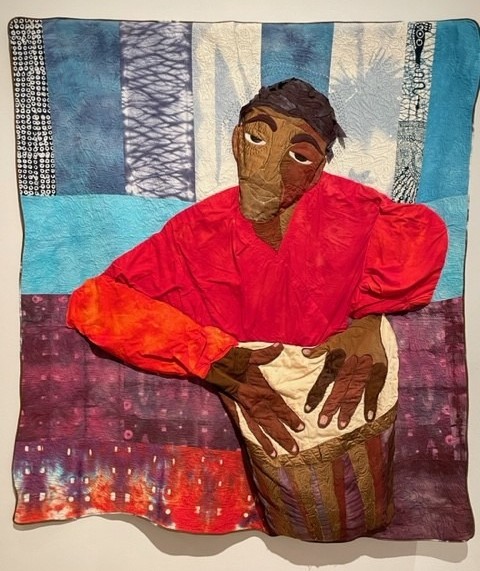
The drummer is a member of a “Lubolo compars,” an Afro-Uruguayan traditional music group. Austin’s family had moved to Montevideo, Uruguay. She was homesick. The welcoming by the people and the community, the sharing of music, food and storytelling, reminded her “of Black life back home.”
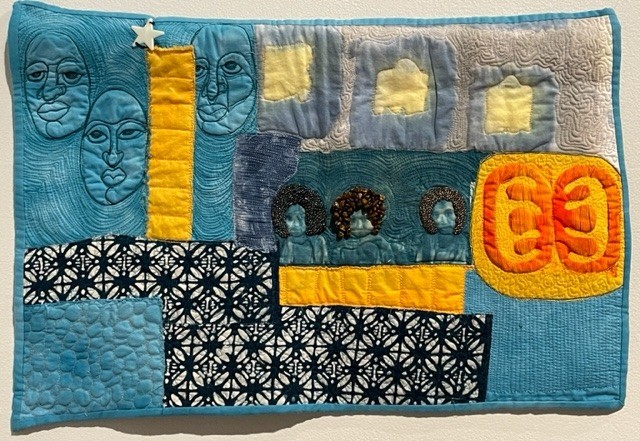
I can imagine this as a fun, fond memory of Great Aunt Louise. The photos in this quilt are a photographer’s proof of Louise Lester in three poses with beaded hair. A wonderful example of cyanoprinting, an archaic method of printing using a mixture of two iron compounds and sunlight.
. . .
Nature, Cultural History and Imagination Quilts

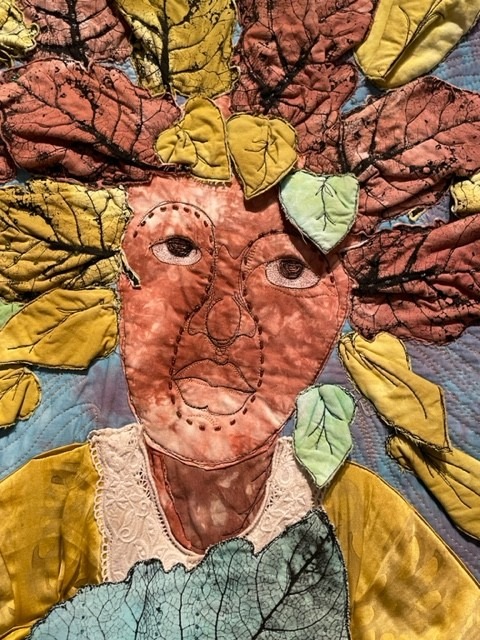
An early piece of meditations on Black people and relationships with nature. Each leaf is a tiny quilt sewn onto the background quilt.

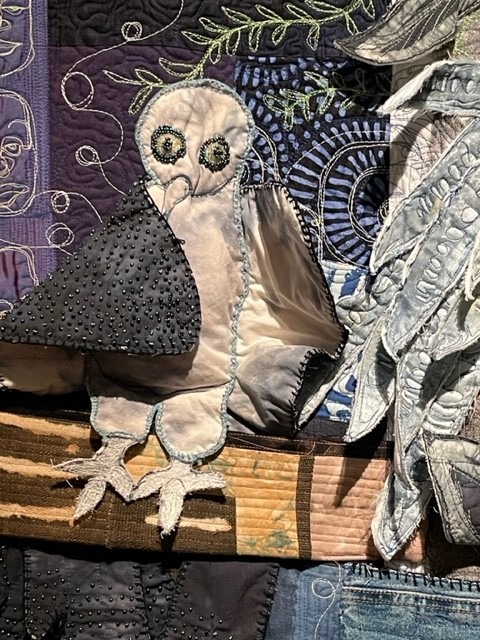
Birds molt old feathers every spring. Here the swallow-tailed kite is molting. Austin imagines the feathers migrating to the woman in the window, referencing “The People Could Fly” African American folktale and traditional gospel song, “I’ll Fly Away.”
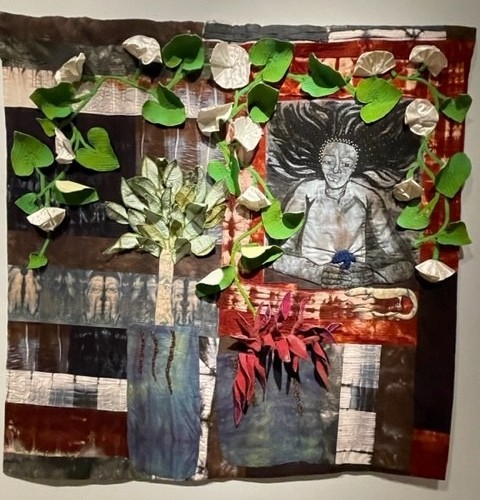
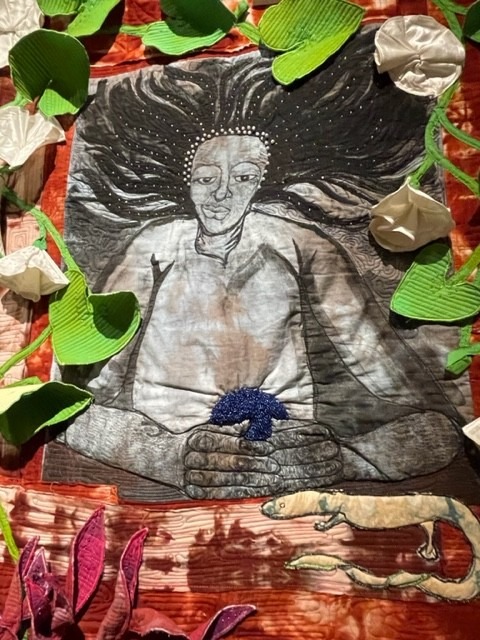
Lauren Austin’s loved her mother’s garden, especially at night with mysterious shadows and light. Night-blooming cereus and other unusual and interesting plants lived in this quiet, contemplative spot.
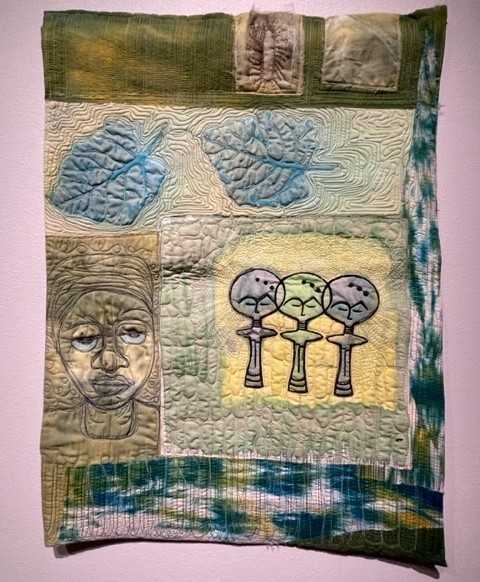
Austin offers this quilt as a meditation on spirituality.
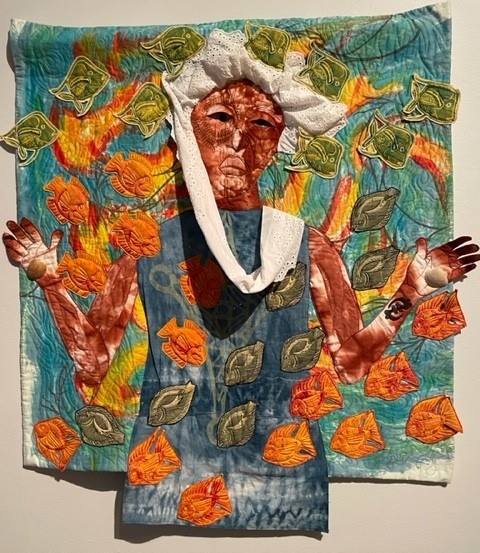
This version of the Goddess of the Sea is surrounded by fish. The interpretation is that Yamanja is unhappy about how people treat her oceans. The figure and fish are quilted separately and then appliqued to the background.
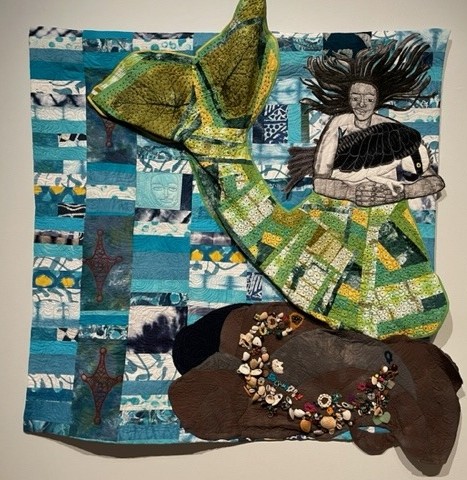
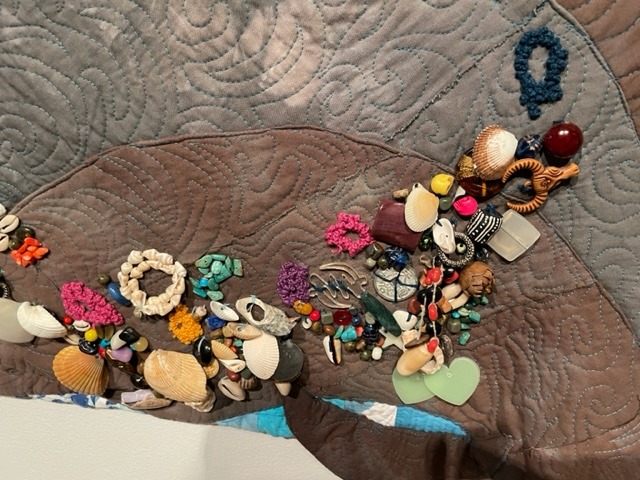

Yemanja is the Yoruba god of the sea and often depicted as a mermaid. The beads in her tail and hair and on the osprey and rocks are sewn in by hand.
. . .
History Quilts
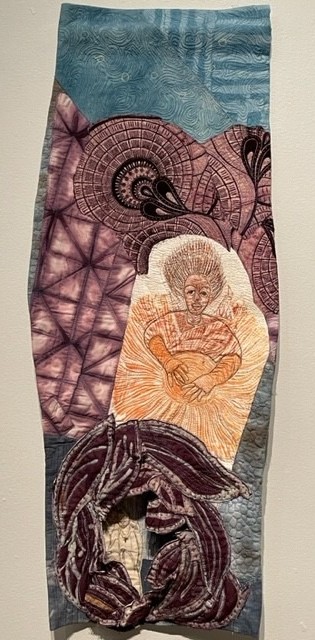
A pair of Congolese girls during the 1920s.
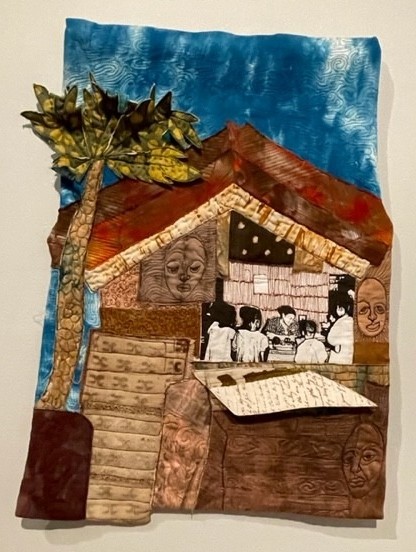

This is a quilt about Elsie Dunbar of Lakeland. She and other members of the Black community worked hard to nurture the love of learning against the opinions of the larger society.
Their efforts created a library in a home. Eventually, a formal library was established at Virginia Avenue.
. . .
@instagram.com/blackgirlart1959
. . .
Through March 19
Polk Museum of Art at Florida Southern College
800 E Palmetto St.
Lakeland FL 33801-5529
863-688-7743
polkmuseumofart.org
10 am-4 pm Tuesday-Saturday, 1-5 pm Sunday
Free admission
. . .
Other Exhibits at the Polk Museum of Art
An Artist’s Journey: The Lifeworks of Chryssie Bilder Tavrides
Through Sunday, April 16
Portraits, florals and seascapes in acrylic, charcoal, stone lithography and mixed media by this Central Florida artist during her 90-year career.
Hunt Slonem’s Hare Salon
Through Saturday, May 27
Rabbits or “bunnies” are the most popular subject matter of this artist. Each rabbit Slonem creates has a different personality.
Jerry Uelsmann: Dreams from the Darkroom
Through Saturday, May 27
Long before the invention of Adobe Photoshop, Jerry N. Uelsmann (1934-2022) distinguished himself as a modern pioneer of photomontage.
. . .
